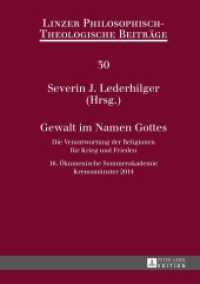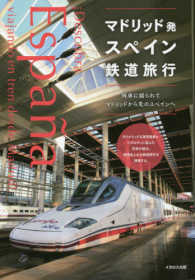- ホーム
- > 洋書
- > 英文書
- > Computer / General
Full Description
This book gathers selected research papers presented at the First Asian Symposium on Cellular Automata Technology (ASCAT 2022), organized online by academicians from Kolkata, India, during March 3-5, 2022. The book presents one of the most emergent areas in natural computing, cellular automaton (CA). CA is a paradigm of uniform fine-grained parallel computation which has been explored to understand complex systems by developing its model at the microscopic level. The book discusses many real-life problems in the domain of very large-scale integration (VLSI) design and test, pattern recognition and classification, cryptography, pseudo-random pattern generation, image processing, sensor networks, material science, etc., by using CA.
Contents
Part I: Invited Papers.- Computing in a Simple Reversible and Conservative Cellular Automaton.- Algorithms for Group Cellular Automata.- Revisiting Logic Obfuscation Using Cellular Automata.- Part II: Accepted Papers.- Grade Estimation of Mineral Resources: An Application of Cellular Automata.- Shape Generation using Cellular Automata with Clustering.- Evolution Patterns of Some One-Dimensional Non-uniform Cellular Automata.- Relationship of Two Discrete Dynamical Models: One-dimensional Cellular Automata and Integral Value Transformations.- Emulating Mersenne Twister with Cellular Automata.- Defining Reachability Tree under Adiabatic and Reflexive Boundary Condition Cellular Automata.- First Degree Cellular Automata as Pseudo-random Number Generators.- Asynchronous Cellular Automata as Randomness Enhancer.- Cellular-automata based simulation of dynamic recrystallization and statistical analysis of resulting grain growth.- A new notion of universality in respect of logic gates generation capability of ECAs.- Impact of Genetic Algorithm on Low power QCA Logic Circuit with Regular Clocking.- Cellular automata based model for finding minimum spanning tree in wireless sensor networks.- A Novel Hash Function based on Hybrid Cellular Automata and Sponge Functions.- Synthesis of Single Length Cycle Two Attractor CA using NSRT Diagram. Suvadip Hazra and Mamata Dalui.








